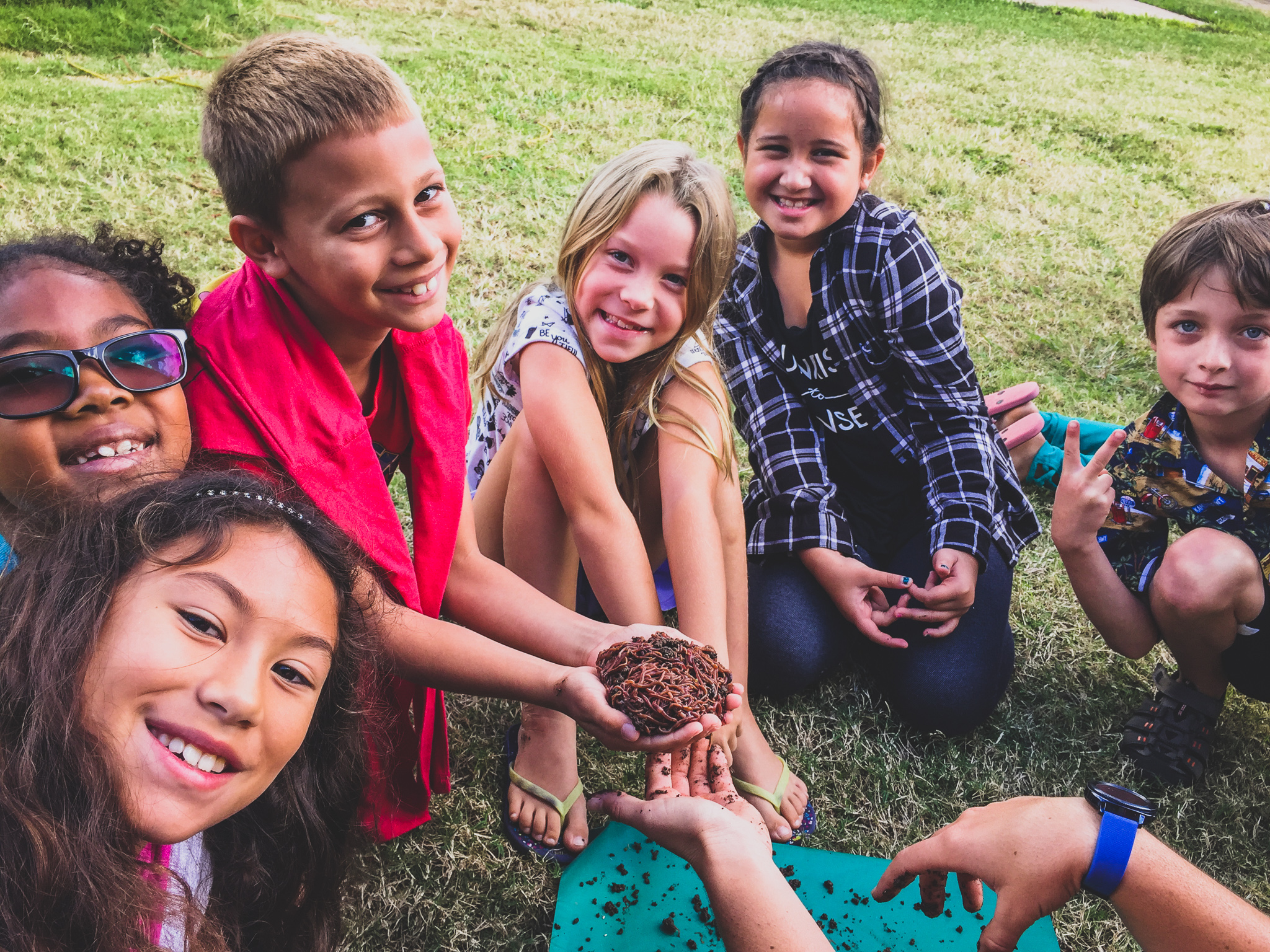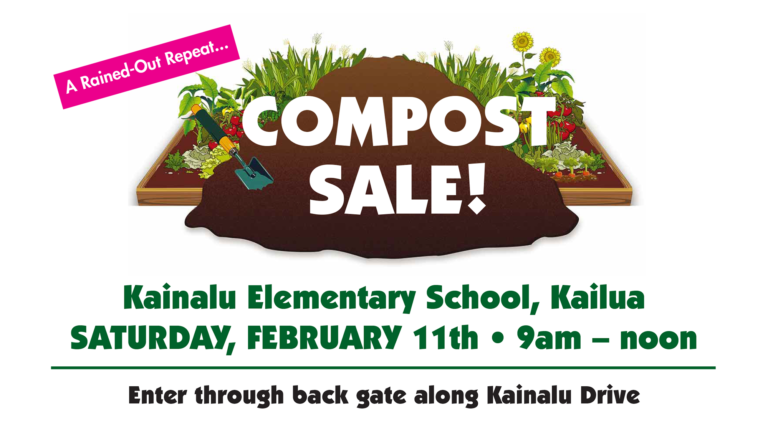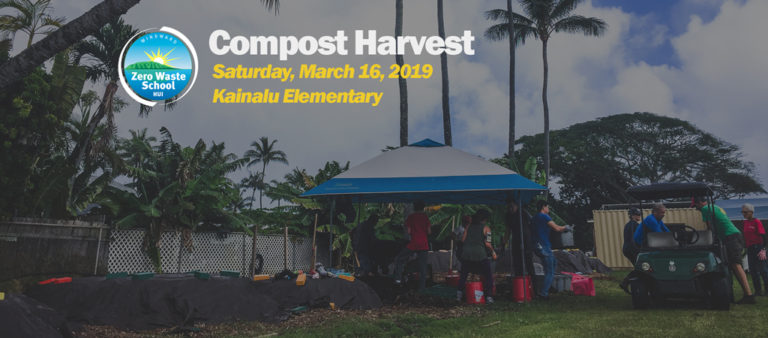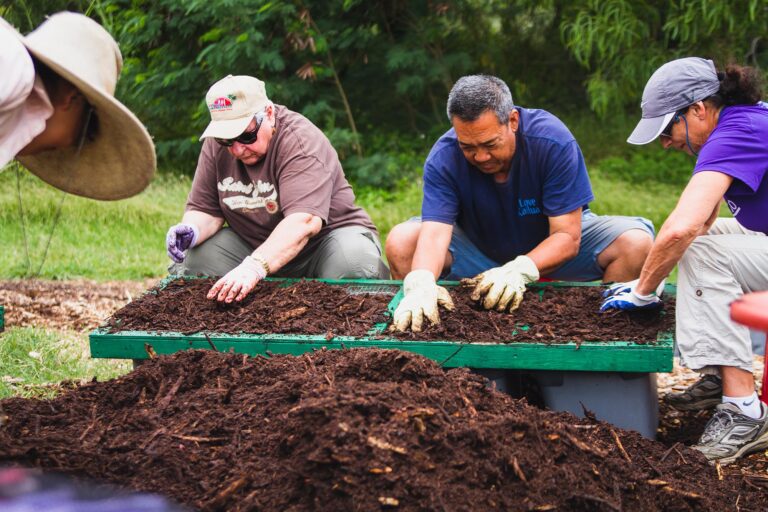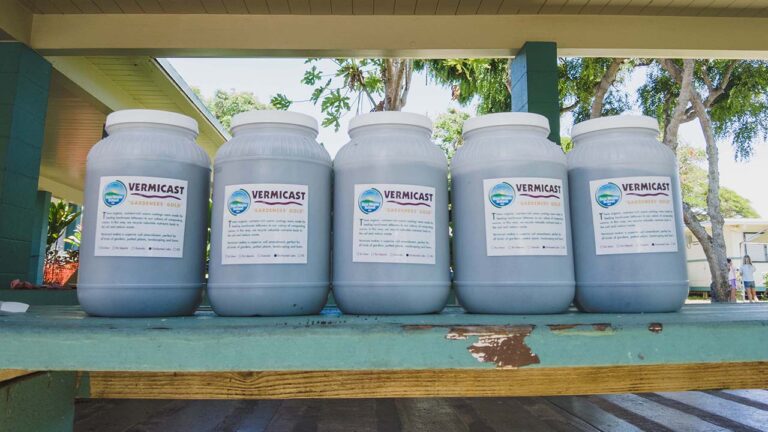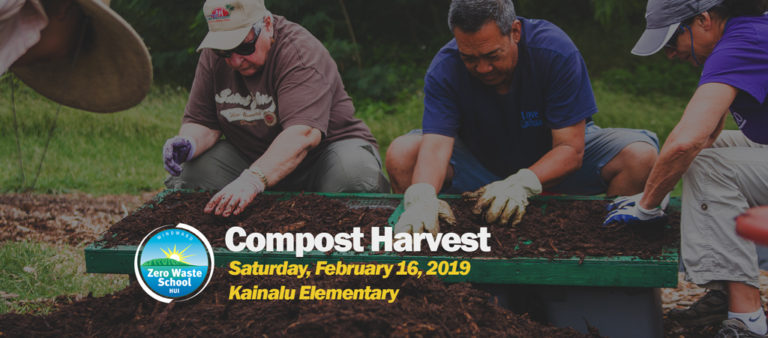Kainalu 2nd graders step up to global WORMING!
Miss Mindy and Miss Jordan introduce Kainalu Elementary 2nd Graders to vermicomposting.
Without a doubt, the most robust, vigorous worm colony on Oahu is at the Headstart Preschool at Kainalu Elementary! Why? Because small children cannot eat the huge plate of breakfast and lunch that is required by federal law to be served in the cafeteria! That means that plenty high-quality fruits, veggies, and grains like muffins, pancakes, and rice are passed on to their classroom composting worms for processing. The resulting worm poop is called vermicast, and it goes into the preschool garden so that plants will thrive.
Kainalu 2nd grade teacher Sherry Caldeira was inspired by the preschoolers’ success and requested a similar classroom bin for her students to tend. Kainalu’s Garden Fund had plenty of money raised at the latest Compost Sale to purchase the equipment needed, and the suggested start of one pound of worms were culled from the school’s long established large-scale vermicomposting operation. The attractive Worm HangOut is a breathable fabric continuous-flow bag system, where food is added to the top every week and vermicast is periodically harvested from an opening on the bottom.
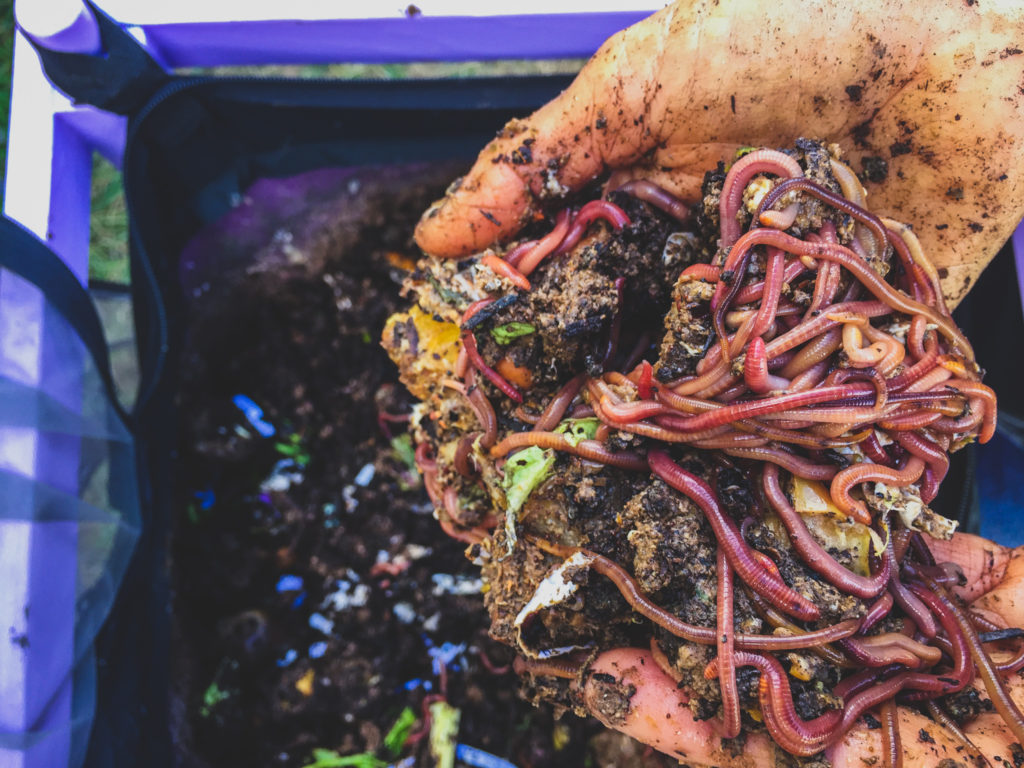
On Valentine’s Day, 2nd graders lovingly tore up discarded cardboard boxes into a mountain of little bits to make base bedding, and shredded a big supply of waste white paper for top covering. On Friday, February 15, 2019, students gathered to meet their worms, introduce them to their new home and learn about their care and feeding.
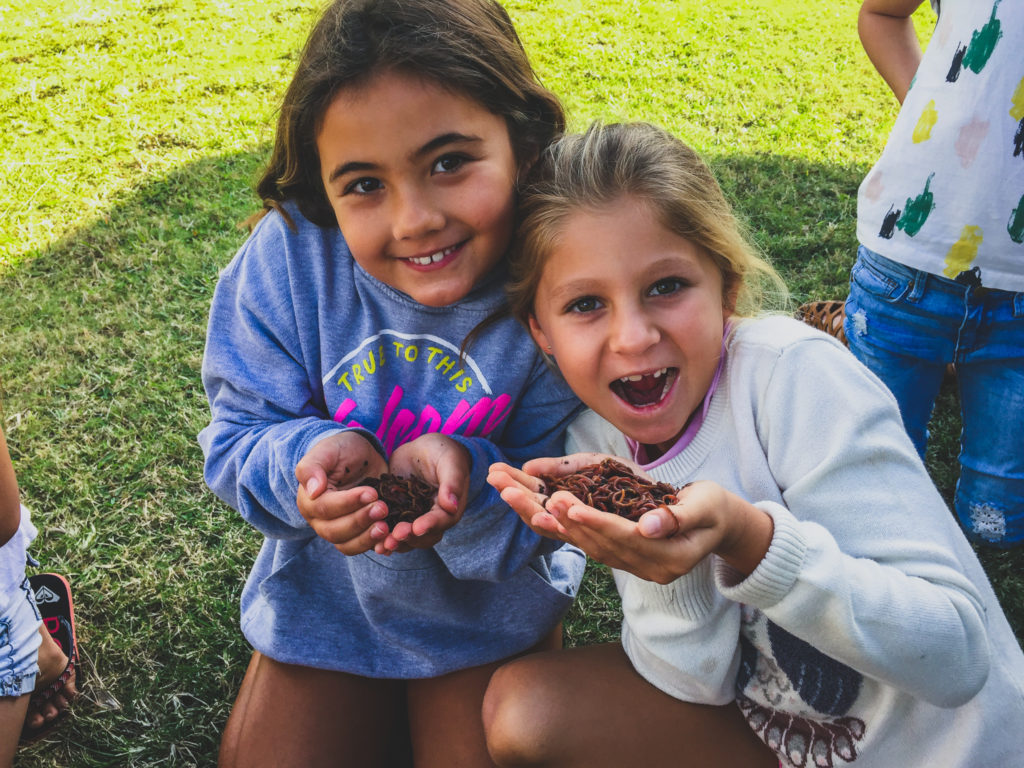
While the preschool teachers operate their worm bin with a bit of assistance from their wee students, Mrs. Caldeira’s more mature 2nd graders will assume the bulk of the responsibility required. They will bring a bucket to lunch every day, and before being dismissed to sort their trays at the Separation Station, they’ll do their own sorting at the table, picking out the appropriate worm food from what is left on their plates.
With access to a refrigerator, they’ll have a week of lunches to collect 5-10 pounds of leftover fruits, veggies, and a few handfuls of rice.
On Fridays, students will use a hanging scale to weigh the food and log the data on a chart. The shredded paper cover is lifted aside so the new food can be placed on the surface. The old paper goes back on top, and fresh paper is added so that no food is exposed. The food bucket will be thoroughly washed out for the next week. As happens every day, one gallon of water is poured over the top to saturate the bed and drain into a bucket positioned underneath.
Mrs. Caldeira will then log into the Zero Waste School Hui website and report the Resource Recovered which shows up on the Hui’s website as well as on the State of Hawaii’s Aloha+ Sustainability Dashboard for all the world to see. How much resource can a classroom of 2nd graders recover with vermicomposting? Let’s say the worms get an average of 5 to 10 pounds weekly, 7.5 pounds per week. Multiply by 40 weeks of school, that adds up to 300 pounds! That’s 300 pounds of noxious wet waste that did not get trashed in the dumpster and cost the residents of Hawaii to transport and process. That’s 300 pounds that went to environmental restoration instead of environmental degradation! It’s worth it – but make no mistake – it’s laborious, and there must be a strong commitment by both students and teachers to see it through.
Classroom worm bins at this scale are still somewhat of an experiment. The staff of the Windward Zero Waste School Hui will be monitoring the progress of Mrs. Caldeira’s class, tweaking where necessary, and continually assessing the success of the project to determine whether to promote similar set-ups elsewhere.
THANK YOU, Mrs. Caldeira and 2nd graders, for stepping up to learn and to do your part for Zero Waste!
